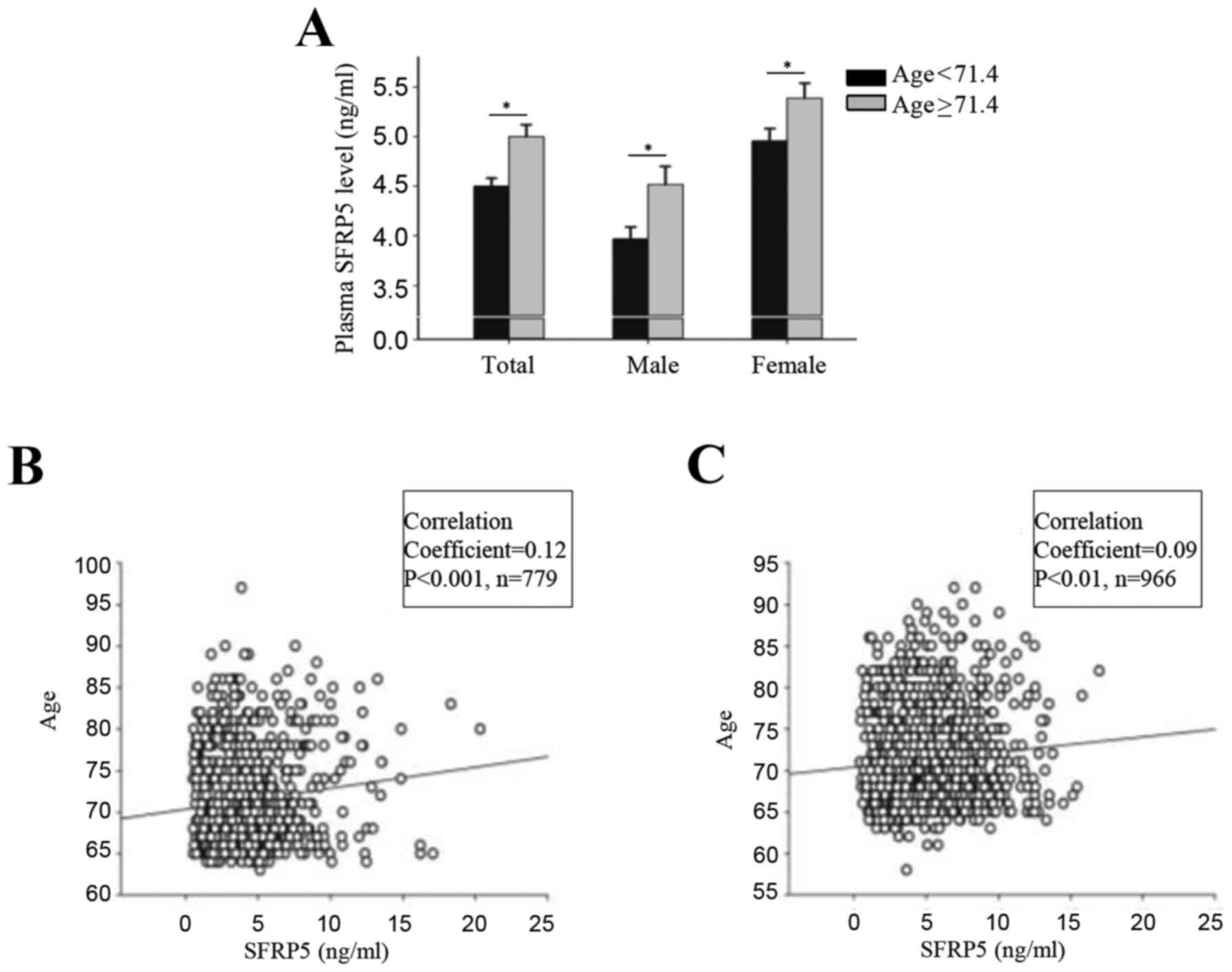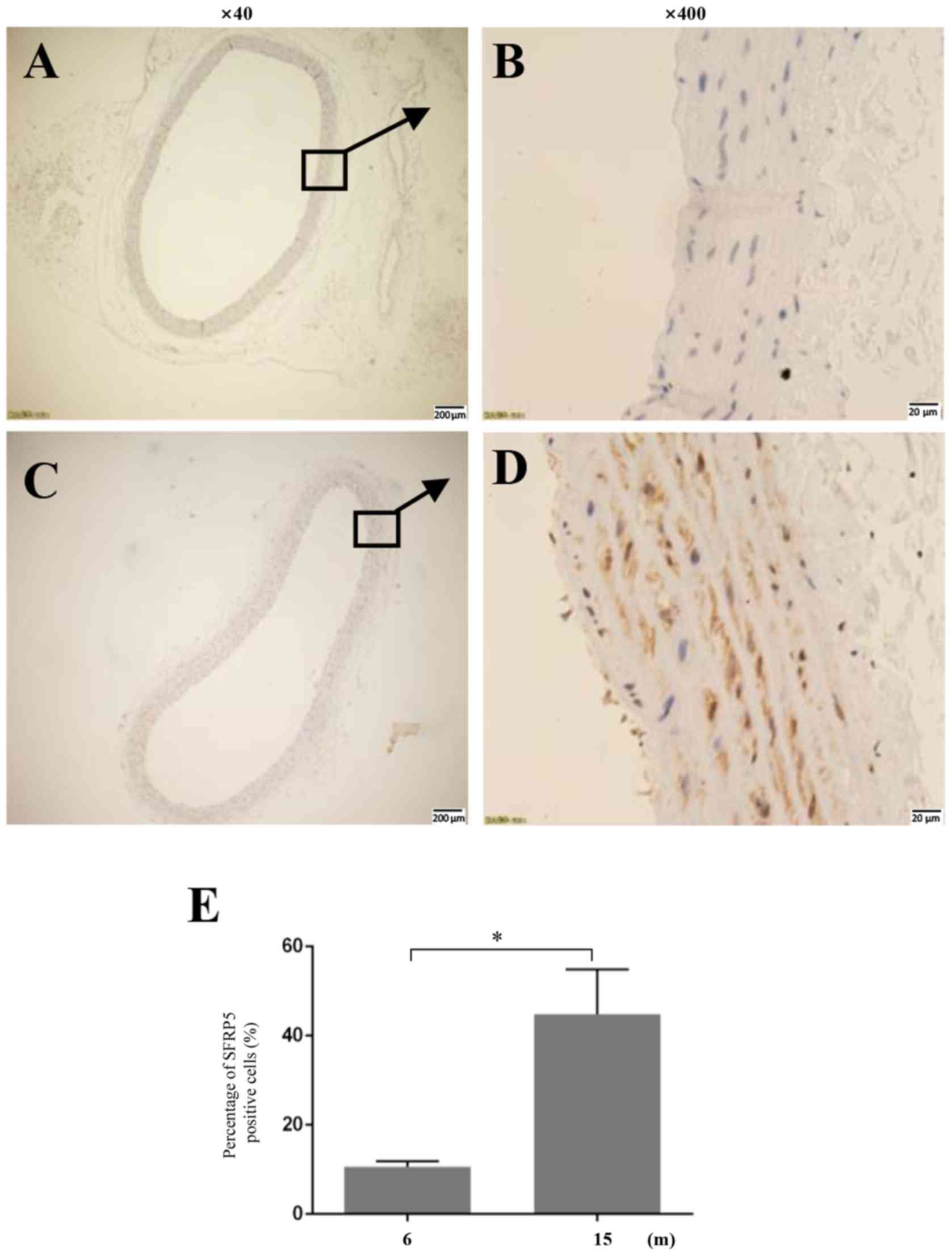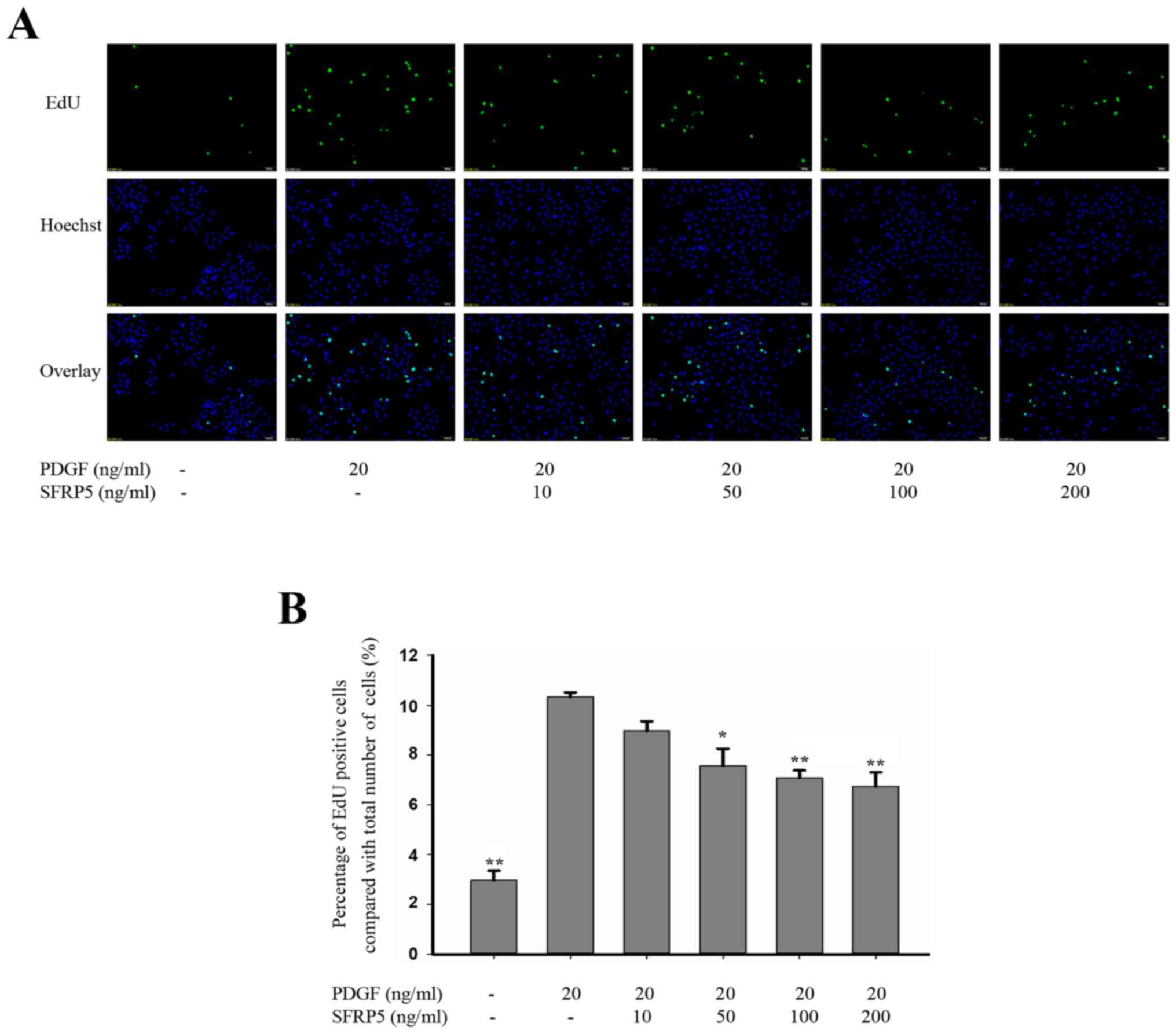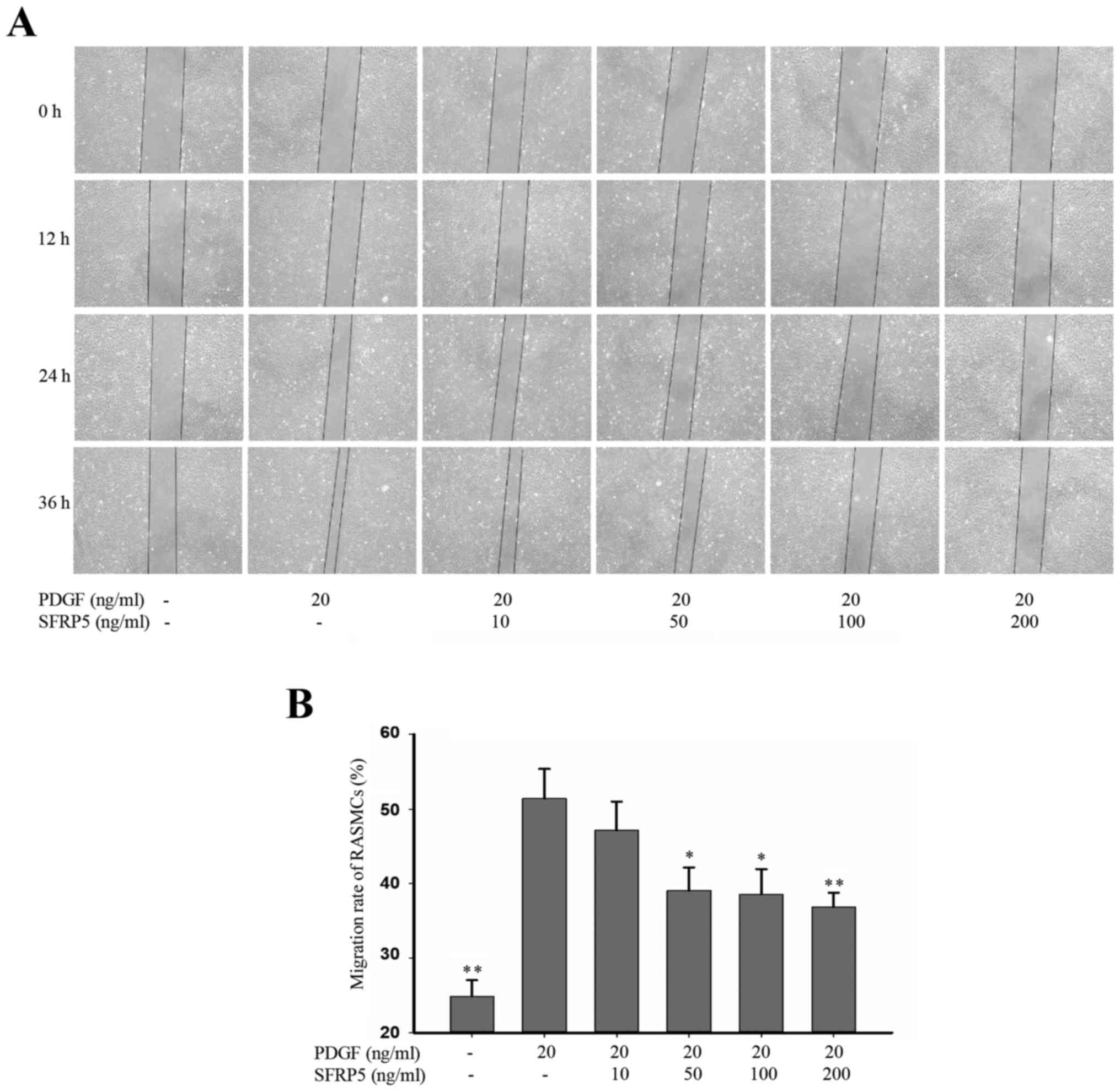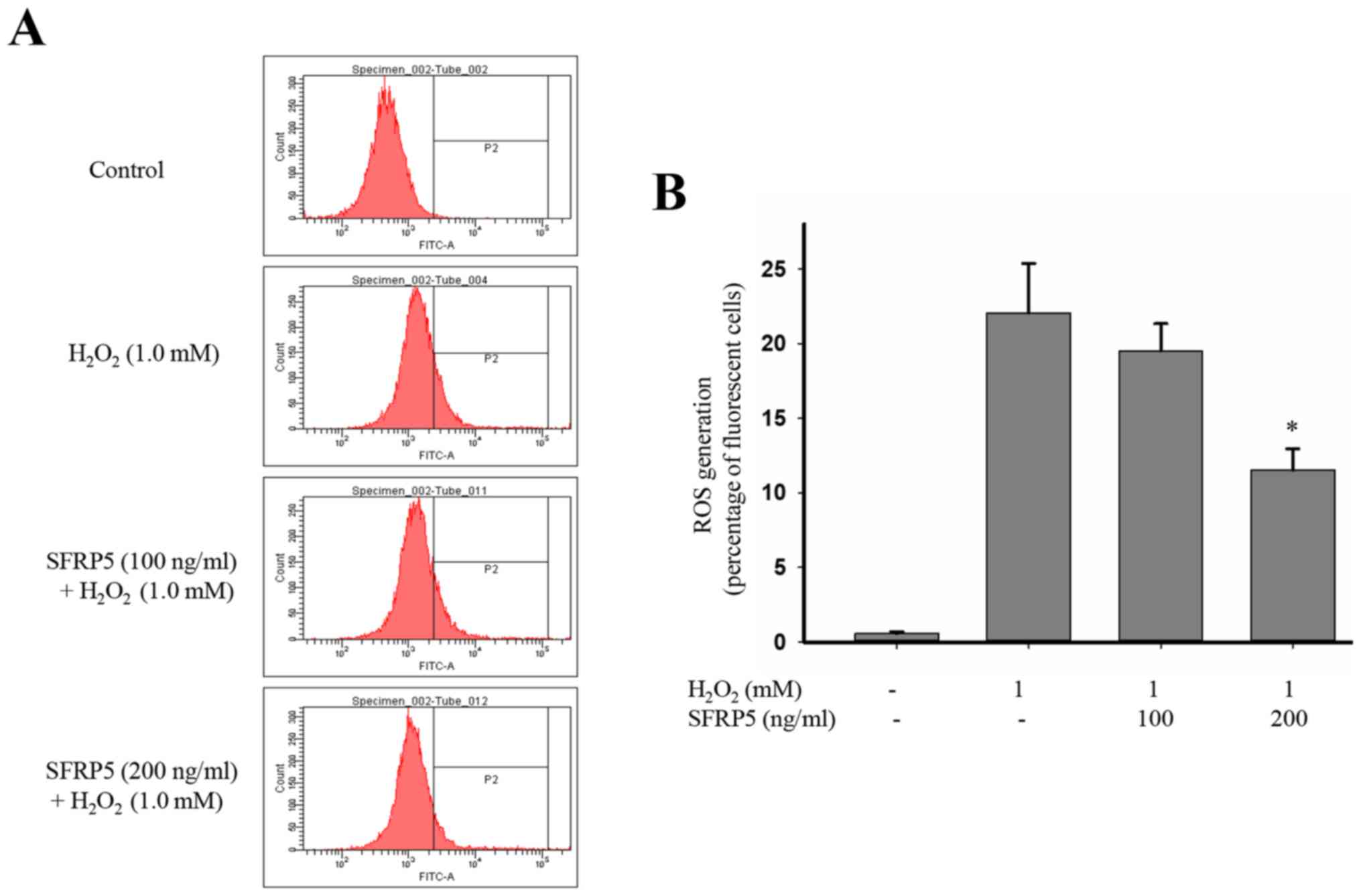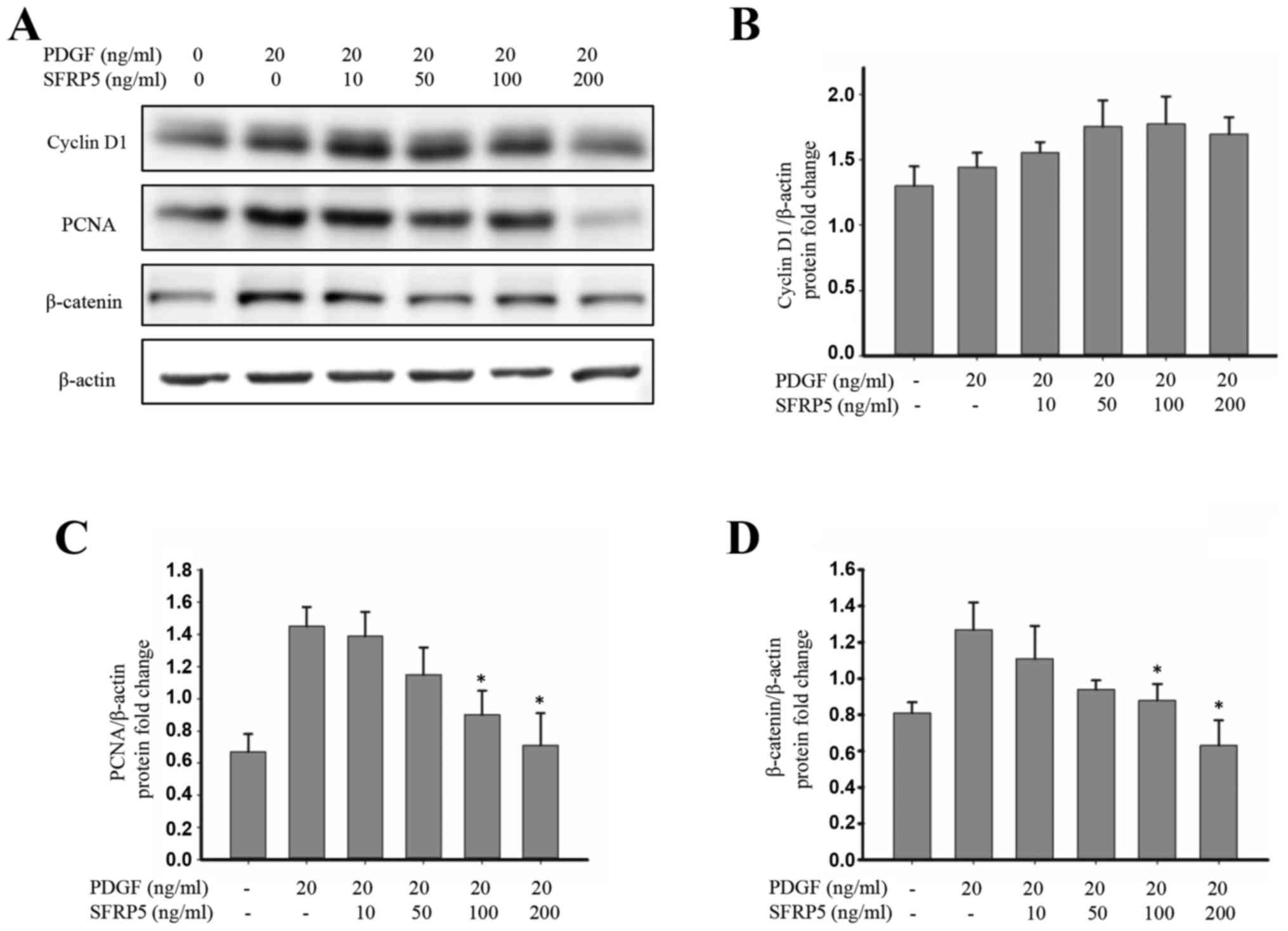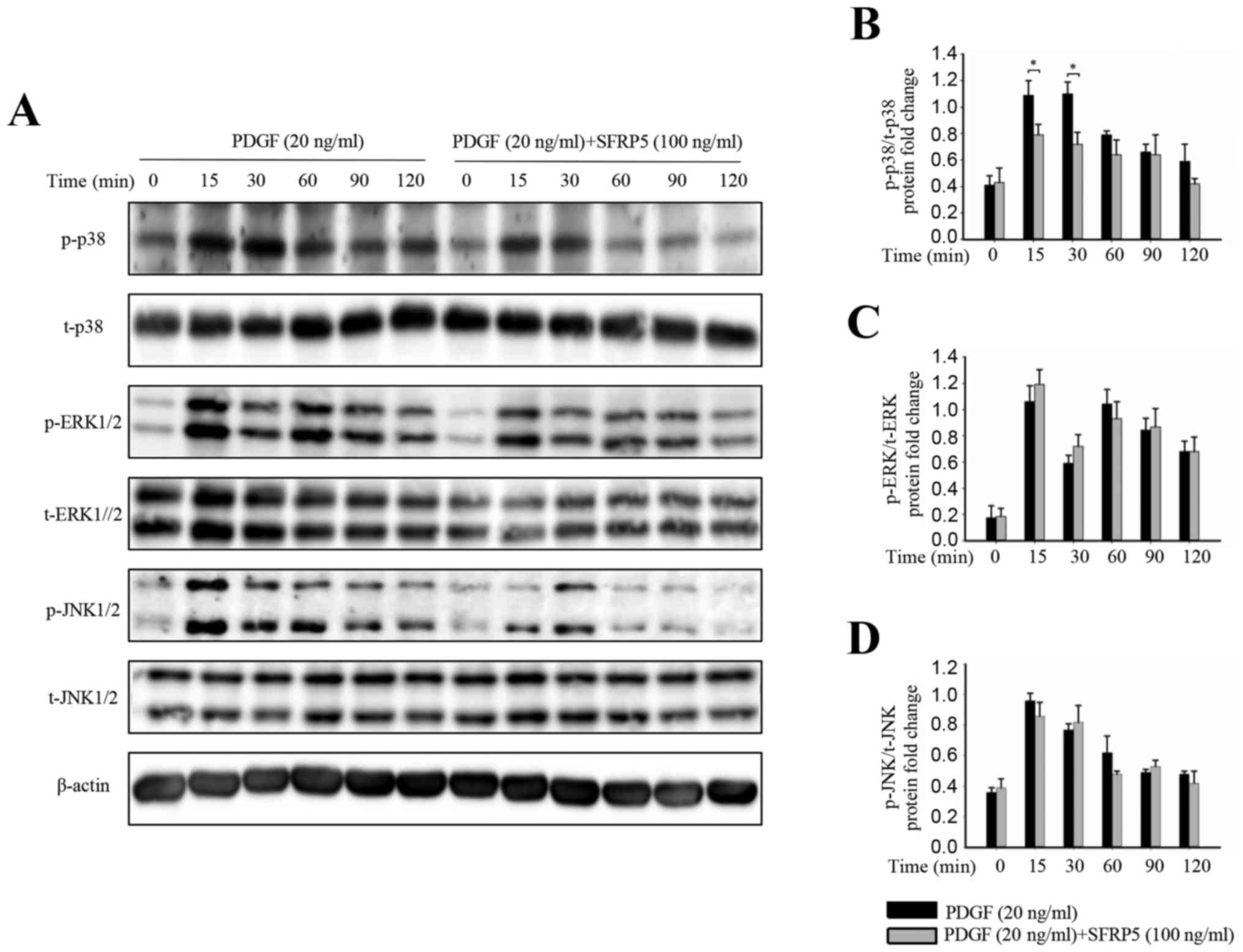|
1
|
North BJ and Sinclair DA: The intersection
between aging and cardiovascular disease. Circ Res. 110:1097–1108.
2012. View Article : Google Scholar : PubMed/NCBI
|
|
2
|
Mistriotis P and Andreadis ST: Vascular
aging: Molecular mechanisms and potential treatments for vascular
rejuvenation. Ageing Res Rev. 37:94–116. 2017. View Article : Google Scholar : PubMed/NCBI
|
|
3
|
Ouwens DM, Sell H, Greulich S and Eckel J:
The role of epicardial and perivascular adipose tissue in the
pathophysiology of cardiovascular disease. J Cell Mol Med.
14:2223–2234. 2010. View Article : Google Scholar : PubMed/NCBI
|
|
4
|
Rajsheker S, Manka D, Blomkalns AL,
Chatterjee TK, Stoll LL and Weintraub NL: Crosstalk between
perivascular adipose tissue and blood vessels. Curr Opin Pharmacol.
10:191–196. 2010. View Article : Google Scholar : PubMed/NCBI
|
|
5
|
Ouchi N, Higuchi A, Ohashi K, Oshima Y,
Gokce N, Shibata R, Akasaki Y, Shimono A and Walsh K: Sfrp5 is an
anti-inflammatory adipokine that modulates metabolic dysfunction in
obesity. Science. 329:454–457. 2010. View Article : Google Scholar : PubMed/NCBI
|
|
6
|
Mori H, Prestwich TC, Reid MA, Longo KA,
Gerin I, Cawthorn WP, Susulic VS, Krishnan V, Greenfield A and
Macdougald OA: Secreted frizzled-related protein 5 suppresses
adipocyte mitochondrial metabolism through WNT inhibition. J Clin
Invest. 122:2405–2416. 2012. View
Article : Google Scholar : PubMed/NCBI
|
|
7
|
Koza RA, Nikonova L, Hogan J, Rim JS,
Mendoza T, Faulk C, Skaf J and Kozak LP: Changes in gene expression
foreshadow diet-induced obesity in genetically identical mice. PLoS
Genet. 2:e812006. View Article : Google Scholar : PubMed/NCBI
|
|
8
|
Chatani N, Kamada Y, Kizu T, Ogura S,
Furuta K, Egawa M, Hamano M, Ezaki H, Kiso S, Shimono A, et al:
Secreted frizzled-related protein 5 (Sfrp5) decreases hepatic
stellate cell activation and liver fibrosis. Liver Int.
35:2017–2026. 2015. View Article : Google Scholar : PubMed/NCBI
|
|
9
|
Deng D, Diao Z, Han X and Liu W: Secreted
frizzled-related protein 5 attenuates high phosphate-induced
calcification in vascular smooth muscle cells by inhibiting the
Wnt/ß-catenin pathway. Calcif Tissue Int. 99:66–75. 2016.
View Article : Google Scholar : PubMed/NCBI
|
|
10
|
Miyoshi T, Doi M, Usui S, Iwamoto M,
Kajiya M, Takeda K, Nosaka K, Nakayama R, Okawa K, Takagi W, et al:
Low serum level of secreted frizzled-related protein 5, an
anti-inflammatory adipokine, is associated with coronary artery
disease. Atherosclerosis. 233:454–459. 2014. View Article : Google Scholar : PubMed/NCBI
|
|
11
|
Nakamura K, Sano S, Fuster JJ, Kikuchi R,
Shimizu I, Ohshima K, Katanasaka Y, Ouchi N and Walsh K: Secreted
frizzled-related protein 5 diminishes cardiac inflammation and
protects the heart from ischemia/reperfusion injury. J Biol Chem.
291:2566–2575. 2016. View Article : Google Scholar : PubMed/NCBI
|
|
12
|
Ji H, Xiong J, Yu S, Chi C, Fan X, Bai B,
Zhou Y, Teliewubai J, Lu Y, Xu H, et al: Northern shanghai study:
Cardiovascular risk and its associated factors in the Chinese
elderly-a study protocol of a prospective study design. BMJ Open.
7:e0138802017. View Article : Google Scholar : PubMed/NCBI
|
|
13
|
Travo P, Barrett G and Burnstock G:
Differences in proliferation of primary cultures of vascular smooth
muscle cells taken from male and female rats. Blood Vessels.
17:110–116. 1980.PubMed/NCBI
|
|
14
|
Baumgartner HR and Hosang M: Platelets,
platelet-derived growth factor and arteriosclerosis. Experientia.
44:109–112. 1988. View Article : Google Scholar : PubMed/NCBI
|
|
15
|
Satoh W, Matsuyama M, Takemura H, Aizawa S
and Shimono A: Sfrp1, Sfrp2, and Sfrp5 regulate the
Wnt/beta-catenin and the planar cell polarity pathways during early
trunk formation in mouse. Genesis. 46:92–103. 2008. View Article : Google Scholar : PubMed/NCBI
|
|
16
|
Li Y, Rankin SA, Sinner D, Kenny AP, Krieg
PA and Zorn AM: Sfrp5 coordinates foregut specification and
morphogenesis by antagonizing both canonical and noncanonical Wnt11
signaling. Genes Dev. 22:3050–3063. 2008. View Article : Google Scholar : PubMed/NCBI
|
|
17
|
Lu YC, Wang CP, Hsu CC, Chiu CA, Yu TH,
Hung WC, Lu LF, Chung FM, Tsai IT, Lin HC and Lee YJ: Circulating
secreted frizzled-related protein 5 (Sfrp5) and wingless-type MMTV
integration site family member 5a (Wnt5a) levels in patients with
type 2 diabetes mellitus. Diabetes Metab Res Rev. 29:551–556.
2013.PubMed/NCBI
|
|
18
|
Carstensen M, Herder C, Kempf K, Erlund I,
Martin S, Koenig W, Sundvall J, Bidel S, Kuha S, Roden M and
Tuomilehto J: Sfrp5 correlates with insulin resistance and
oxidative stress. Eur J Clin Invest. 43:350–357. 2013. View Article : Google Scholar : PubMed/NCBI
|
|
19
|
Jin X, Guo B, Yan J, Yang R, Chang L, Wang
Y, Miao C, Liu S, Zhang H and Li Y: Angiotensin II increases
secreted frizzled-related protein 5 (sFRP5) expression through AT1
receptor/Rho/ROCK1/JNK signaling in cardiomyocytes. Mol Cell
Biochem. 408:215–222. 2015. View Article : Google Scholar : PubMed/NCBI
|
|
20
|
Bovolenta P, Rodriguez J and Esteve P:
Frizzled/RYK mediated signalling in axon guidance. Development.
133:4399–4408. 2006. View Article : Google Scholar : PubMed/NCBI
|
|
21
|
Nelson WJ and Nusse R: Convergence of Wnt,
beta-catenin, and cadherin pathways. Science. 303:1483–1487. 2004.
View Article : Google Scholar : PubMed/NCBI
|
|
22
|
Logan CY and Nusse R: The Wnt signaling
pathway in development and disease. Annu Rev Cell Dev Biol.
20:781–810. 2004. View Article : Google Scholar : PubMed/NCBI
|
|
23
|
Clevers H and Nusse R: Wnt/β-catenin
signaling and disease. Cell. 149:1192–1205. 2012. View Article : Google Scholar : PubMed/NCBI
|
|
24
|
Kawano Y and Kypta R: Secreted antagonists
of the Wnt signalling pathway. J Cell Sci. 116:2627–2634. 2003.
View Article : Google Scholar : PubMed/NCBI
|
|
25
|
Suzuki H, Watkins DN, Jair KW, Schuebel
KE, Markowitz SD, Chen WD, Pretlow TP, Yang B, Akiyama Y, Van
Engeland M, et al: Epigenetic inactivation of SFRP genes allows
constitutive WNT signaling in colorectal cancer. Nat Genet.
36:417–422. 2004. View
Article : Google Scholar : PubMed/NCBI
|
|
26
|
Pećina-Šlaus N, Kafka A, Varošanec AM,
Marković L, Krsnik Ž, Njirić N and Mrak G: Expression patterns of
Wnt signaling component, secreted frizzled-related protein 3 in
astrocytoma and glioblastoma. Mol Med Rep. 13:4245–4251. 2016.
View Article : Google Scholar : PubMed/NCBI
|
|
27
|
Wang L, Zhu LH, Jiang H, Tang QZ, Yan L,
Wang D, Liu C, Bian ZY and Li H: Grape seed proanthocyanidins
attenuate vascular smooth muscle cell proliferation via blocking
phosphatidylinositol 3-kinase-dependent signaling pathways. J Cell
Physiol. 223:713–726. 2010.PubMed/NCBI
|
|
28
|
Huang C, Jacobson K and Schaller MD: MAP
kinases and cell migration. J Cell Sci. 117:4619–4628. 2004.
View Article : Google Scholar : PubMed/NCBI
|
|
29
|
Ono K and Han J: The p38 signal
transduction pathway: Activation and function. Cell Signal.
12:1–13. 2000. View Article : Google Scholar : PubMed/NCBI
|
|
30
|
Dong LH, Wen JK, Miao SB, Jia Z, Hu HJ,
Sun RH, Wu Y and Han M: Baicalin inhibits PDGF-BB-stimulated
vascular smooth muscle cell proliferation through suppressing
PDGFRβ-ERK signaling and increase in p27 accumulation and prevents
injury-induced neointimal hyperplasia. Cell Res. 20:1252–1262.
2010. View Article : Google Scholar : PubMed/NCBI
|
|
31
|
Iida M, Tanabe K, Kozawa O and Iida H:
Differential effects of intravenous anesthetics on PDGF-BB-induced
vascular smooth muscle cell migration. Cell Physiol Biochem.
33:1827–1837. 2014. View Article : Google Scholar : PubMed/NCBI
|















